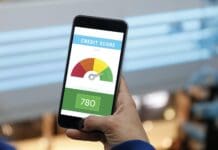The United States economy added only 266,000 jobs according to the April jobs report — well below early estimates by economists from several major financial firms of more than one million jobs and the slowest growth since January. Additionally, the total number of jobs added to the economy in March was adjusted down to 770,000 from 916,000. The low increase in the number of jobs contributed to a .1 percent rise in unemployment to 6.1 percent, ahead of estimates near 5.8 percent.
Despite poor results from the April jobs report, economists are still optimistic about the continuing economic recovery of the United States. Other data, like the falling total number of new claims for unemployment benefits, suggest that the economy is still making gains in certain places, but not as quickly as economists would like in others. Unemployment claims dropped last week to a new pandemic low — just below 500,000 Americans claimed for unemployment. Economists say that low growth in the level of employment is likely a result of a lack of employees rather than a lack of available positions.
Although the United States is making significant strides toward a full recovery from the Covid-19 pandemic, its workers are hesitant to return to a system that left them struggling and sometimes unable to meet their basic necessities. Workers in many states can now receive more from unemployment benefits than they can while working full-time at a minimum wage job. Low-wage employers need to increase their wages and offer security and benefits to their employees if they want to return to pre-pandemic operations. Further, modernization in the economy is also contributing to fear among low-wage workers in manufacturing that feel that their jobs are likely to be automated or outsourced overseas.
The Biden administration seeks to alleviate some of the financial anxiety among low-wage workers by continuing to pump money into the economy with additional stimulus plans that invest in the nation’s infrastructure — including education, green energy, childcare, and more. The infrastructure plan will begin to address rampant income inequality and help modernize the United States economy with environmentally friendly sources of energy and aid to rural and minority communities. The plan will be split into two parts, each coming in at around $2 trillion over the next decade, which will be paid by increased taxes on wealthy Americans and corporations.
Overall, Biden’s stimulus plans and increasing wages for low-wage workers are among the best ways to get the economy back in full swing as the nation deals with the remainder of the Covid-19 pandemic. The pandemic worsened and rendered visible some of the worst inequalities faced by millions of Americans and exposed a system that left them alone when they needed help the most. Corporate America will need to accommodate the needs and expectations of workers whose struggles are finally coming to fruition in the federal government after years of mistreatment, starvation wages, and a lack of proper benefits.













